Classiness.
Let’s turn back the clock! Radio shows are ruling the airwaves, horseless carriages are all the rage, pictures are starting to move with lights, and folks are living the best lives they can. Everyone nowadays loves a good throwback whether it’s a song that uses the funky beats of the 1980’s or sitcoms whose writing style calls back to the 90’s and 60’s. Even an era as seemingly bygone to some as the 1920’s has folks that love the sense of style. Jazz, technology, the beginning of the golden age of technology, and of course fashion.
The flashy style of what’s considered to be the golden age of Hollywood is something that people often still reflect upon to this very day. Let us dive on into the past and reminisce about the fashion of the past.

A Line of Carriages Without Horses!
Background of the 1920s
Before we go into the fashion worn by folks during the era, it makes sense to go into the context of several different major things that may have contributed to these different outfits. First of all by this point, WWI had ended back in 1918. The world was steadily recovering from the conflict.
The 1920’s was also the start of the Prohibition era. Due to a religious revival in the United States, a nationwide ban on alcohol was enacted. Selling beer, whiskey, or anything of the sort resulted in a prison sentence. However, this simply brought a whole new problem. People were still consuming alcohol, but only in underground bars known as speakeasies. This led to the creation of the gangster, the moonshine swilling, gun toting, turf warring, cigar smoking criminals who took over many American towns. This in turn led to the boom in people telling stories about the rise and fall of these gangsters, typically kept to fictitious characters while using elements of real life stories. As such, the gangster and detective film genres took over Hollywood.
Before jumping in, a quick misconception needs to be cleared. The Great Depression did not happen until 1929, so it did not have much influence on fashion quite yet. All of that out of the way, let’s go and dive into the actual fashion itself.
Dapper Gentlemen
First off, the gentlemen of this era had a rather straightforward taste in fashion. The society of the 1920’s had a deep respect for the white collar working class, so dressing the part tended to garner that respect.
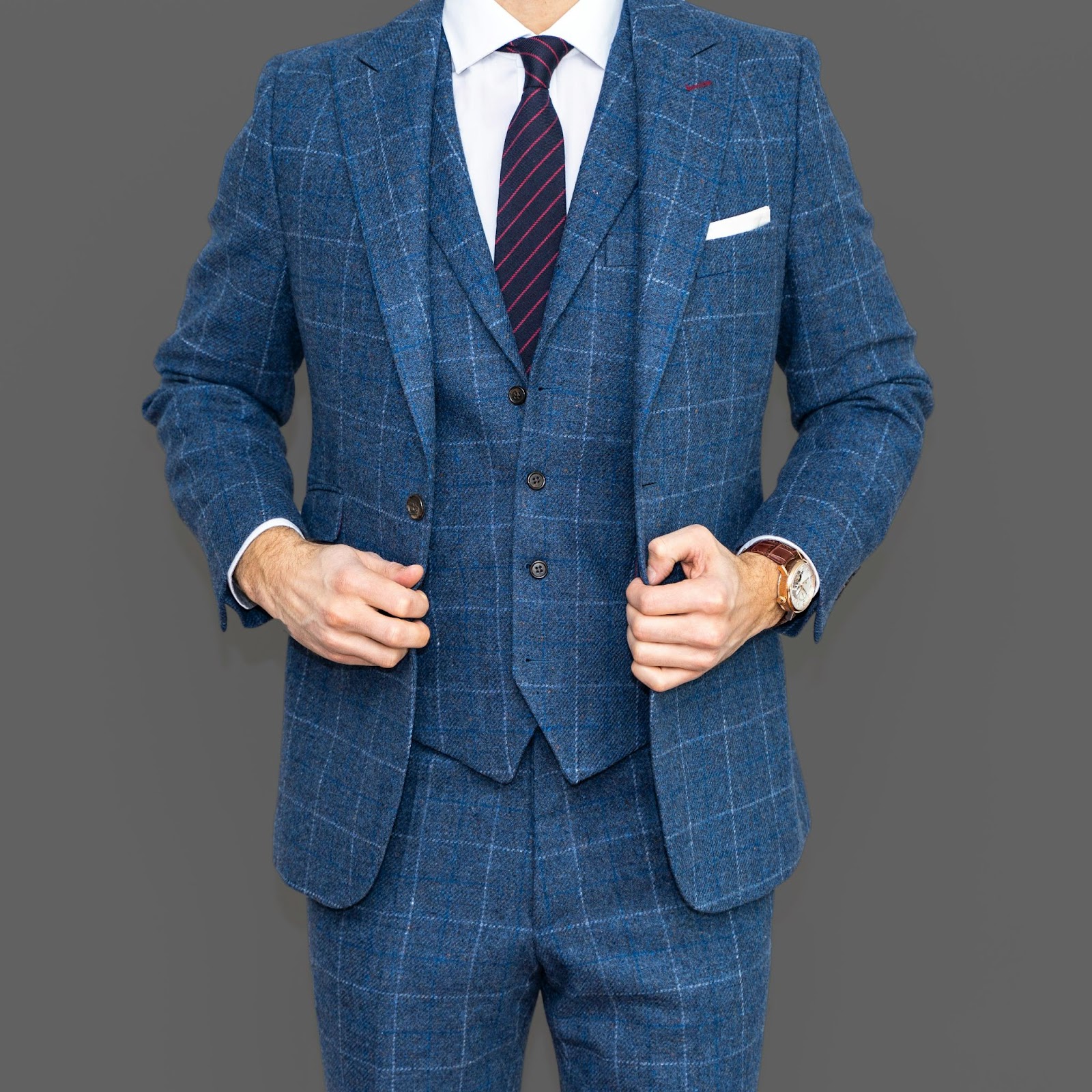
The Immortal 3 Piece.
- Three Piece Suits:
The esteemed classic in style and prestige, the three piece suit is an icon of men’s fashion. The matching trio of slacks, blazer, and a stylized shirt. It really does seem like these suits are truly timeless, being worn by celebrities and politicians to this very day. You can even see that this stance of prestige carried over through the years, including in prominent protests.
A catalog of hats.
- The Hats:
Apart from the various suits that grew more colorful as the decade went on, men could also spice up their wardrobe with the different hats they could wear. Fedoras, tweed caps, bowler hats, and top hats. Each hat somewhat has its own personality. When it comes to a lot of these hats, you can more or less tell aspects of their personality and occupations. These numerous headwear accessories, much like the aforementioned suits, are certainly timeless articles of clothing that still persist to this very day.
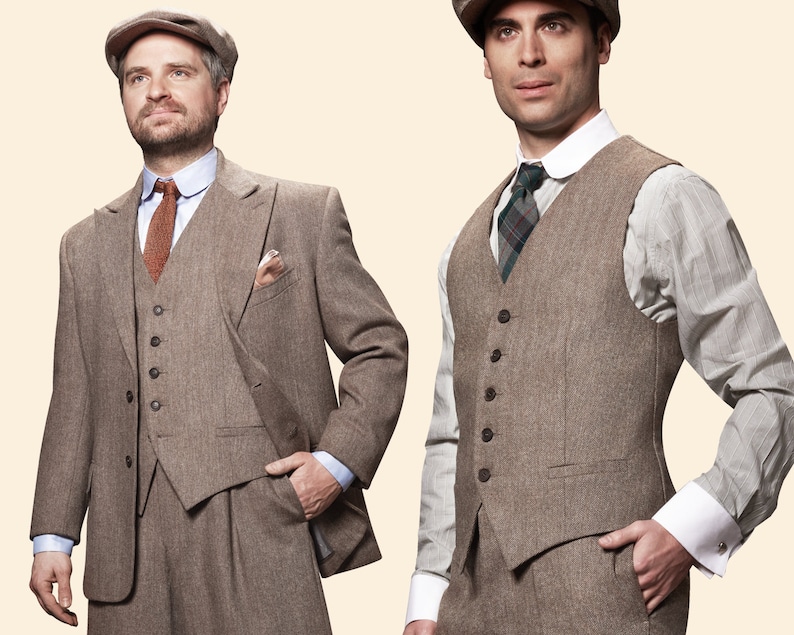
A collection of combinations of various outfits. Image courtesy of Etsy.
- The Jackets and Vests:
The famous suits of the time are often paired with wonderful coats that keep the wearer as warm as they are formal. Long flowing trench coats, short sleeveless vests, waistcoats, and so much more. These jackets can also go alongside outfits of the same color scheme to make for a more cohesive unit. It can very easily tie an entire look together like a nice centerpiece on a Thanksgiving table or a large couch leaning against the living room wall.
Women and Flappers:
Women of this era had the right to vote, but were not exactly treated with a whole lot of respect. The “Flapper” was an icon of independence synonymous with the 1920’s. WWI’s dire circumstances resulted in more women entering the workplace while the men went out to fight. As such, a stronger sense of independence among women was inevitable. The fashion worn by these women are a prominent reflection of that.
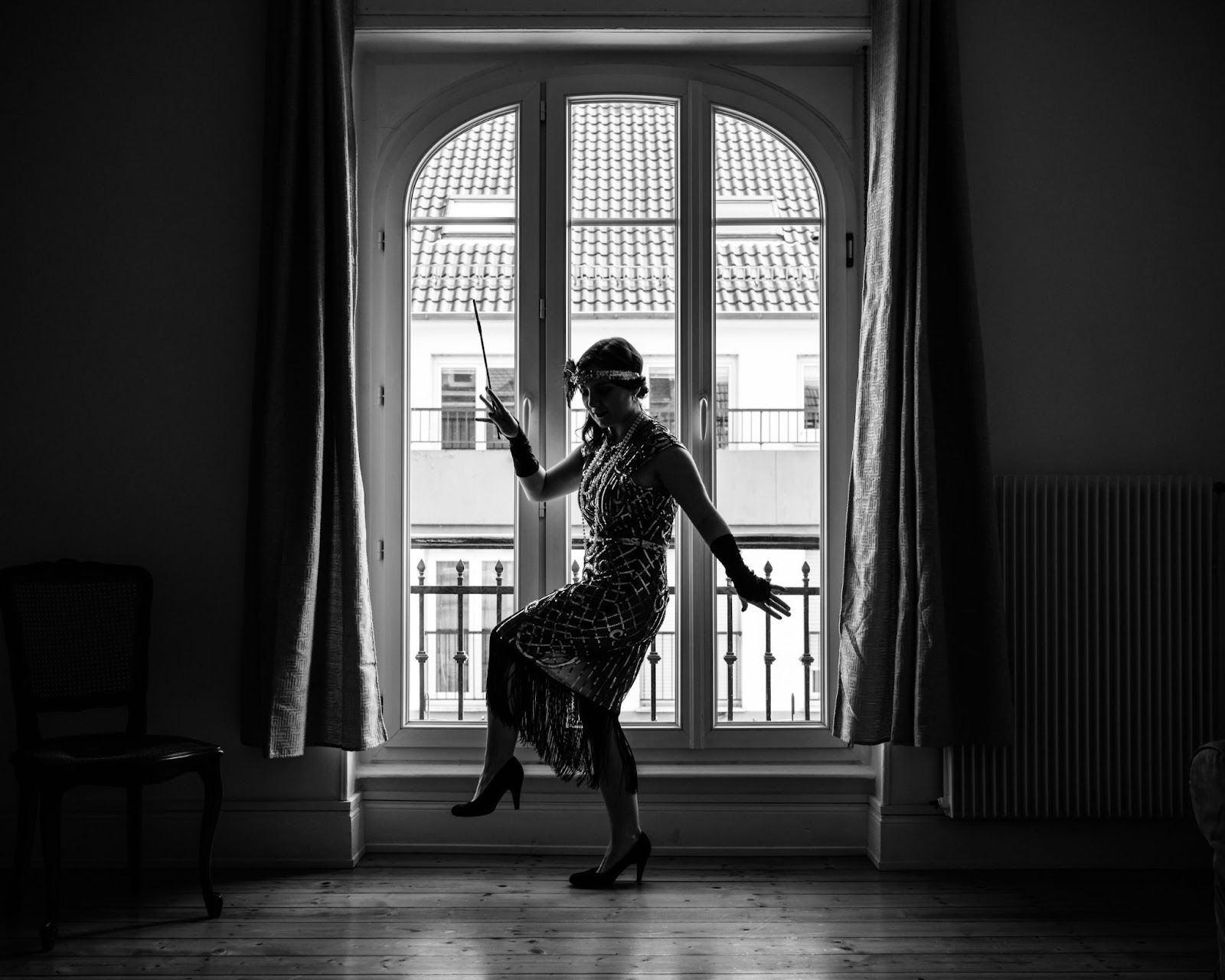
A Classic Flapper Dress.
- Flapper Dresses:
These dresses with cuts just slightly up the calves leaving a lot of their legs exposed. This was an intentional design choice as a symbol of sexual liberation, allowing these women to further feed into their self respect. When people say “women’s fashion of the 1920’s,” chances are that this is the very type of dress you think about. Not only that but at the time, Flappers took the world of entertainment by storm. Dance halls almost always had at least one flapper in a bright sparkly dress lined with sequins like an early version of the classic disco ball.
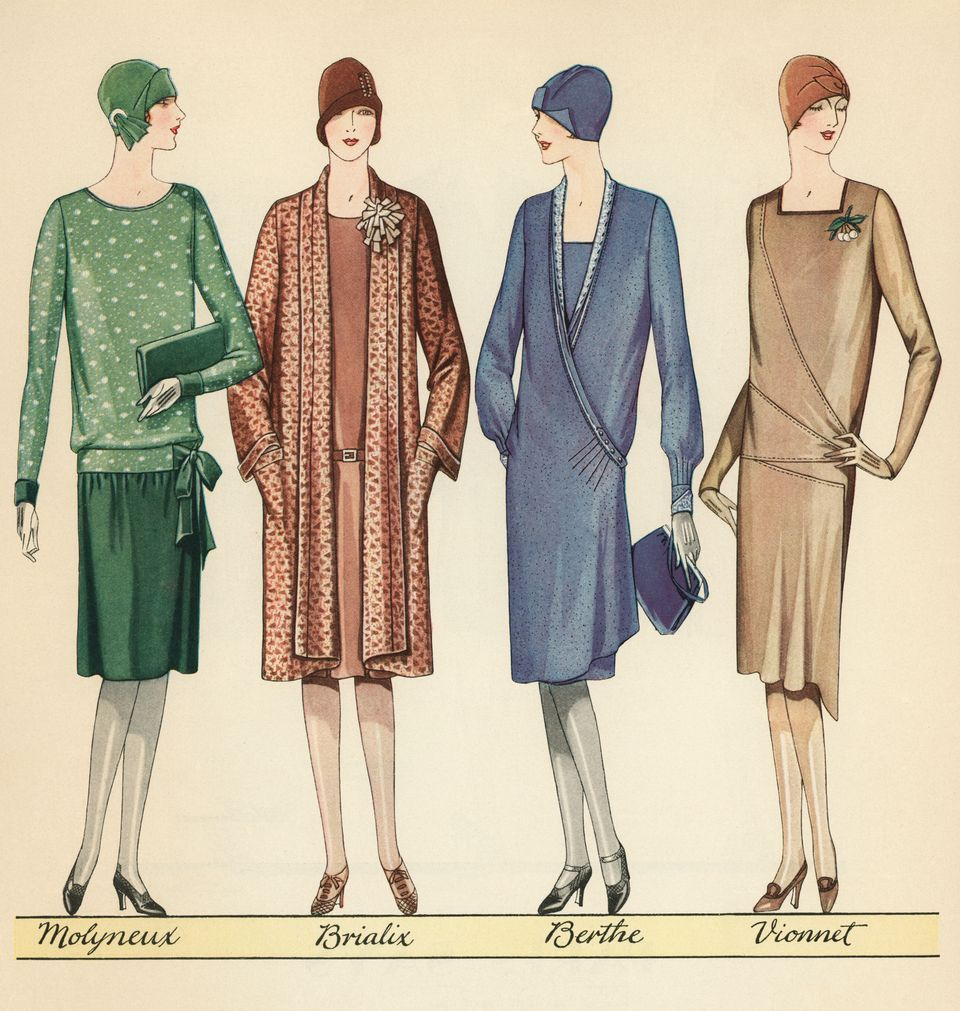
Four Cloches in four nice shades. Image courtesy of Vogue.
- The Cloche:
A hat you sadly do not see too often, the cloche is a hat of pure class and stature. As pointed out by Vogue, the hat is named after the French word for “bell,” matching the shape it has. This hat stands at a league all its own with a simple design and shape but accented with a bright colorful ribbon, maybe even with a flower or two, or a couple feathers if you are feeling more ambitious.
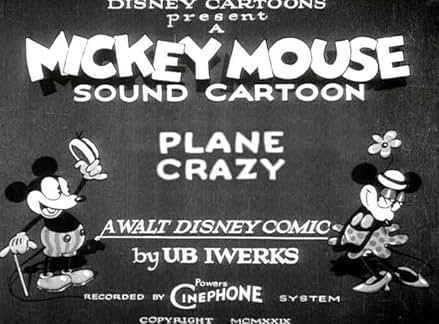
Going Plane Crazy with Mickey Mouse! Image courtesy of IMDB.
Clothing of Cartoons and Icons
Hurry hurry hurry! Step right up! Come right this way and gaze in awe as we watch the moving picture show for more outfits and additions to your very own wardrobe. Now that we have a nice collection of clothes from the common folks of the 1920’s, we can now start looking around the cinema for more garments for our closet of classiness. We can also use this section to talk about the more minute aspects of the style at the time and a brief explanation. Let’s reel back those curtains and get this train rolling!
- Pinstripes, Plaid, and Polka Dots:
In order to break the monotony of many of these outfits (especially in the men’s department), several outfits needed bright colorful patterns. With the power of pinstripes, plaid, and polka dots, folks were able to find their own ways to stand out.
- Ties:
Bow ties, neckties, bolo ties, and more. The standard three piece suit we discussed earlier is known for its sleek look and drawing attention to the wearer’s neckline. As such, these suits take these neckline garments from simple accessories to the outright stars of your looks, especially if your suit is on the more monochrome side.
- White Gloves:
The fancy styling white gloves. The reason that so many cartoons and entertainers wear white gloves is because of Mickey Mouse, and Mickey wears gloves for an interesting reason in itself. Cartoons of the black and white era were loved for their expressiveness. For a long time, characters with black fur like Oswald the Rabbit and Felix the Cat had the issue of their arms and hands blending into their bodies.
However, animators Walt Disney and Ub Iwerks noticed this but wanted to draw the characters’ expressiveness. As such, the character was given white gloves to stand out against the dark ink. Is this why people white gloves? No. Though, it does act as an example of what contributed to the popularity of white gloves.
- Canes:
The classic walking stick. Typically a medical device, canes became a symbol of stature. Figures like Charlie Chaplin added to the way that canes were often seen as a sort of fashion statement. They are not as popular now as fashion accessories, but they are still strong pieces of iconography.

This has been a “reel” wild ride, folks!
Closing the Curtain
Well golly gadzooks! Tie me in licorice and call me Frank, because that was quite the splendorous and wonderful presentation we’ve had. Though, why should we care about any of this? What is there to glean from it? Being able to reflect upon the fashion styles of the past allows us all to see what we can do down the road. The classy styles of the era are certainly worth revisiting for the flare that it brings.
Not only that, but combining the suits of the past with some more modern articles of clothing can allow you to be able to more fully express yourself. Yes, the clothes of the 1920’s were extremely gendered, but you can use that to your advantage in expressing yourself. So get on out there, buckle your shoes and get cracking! Step on down into the past and get your new look today!

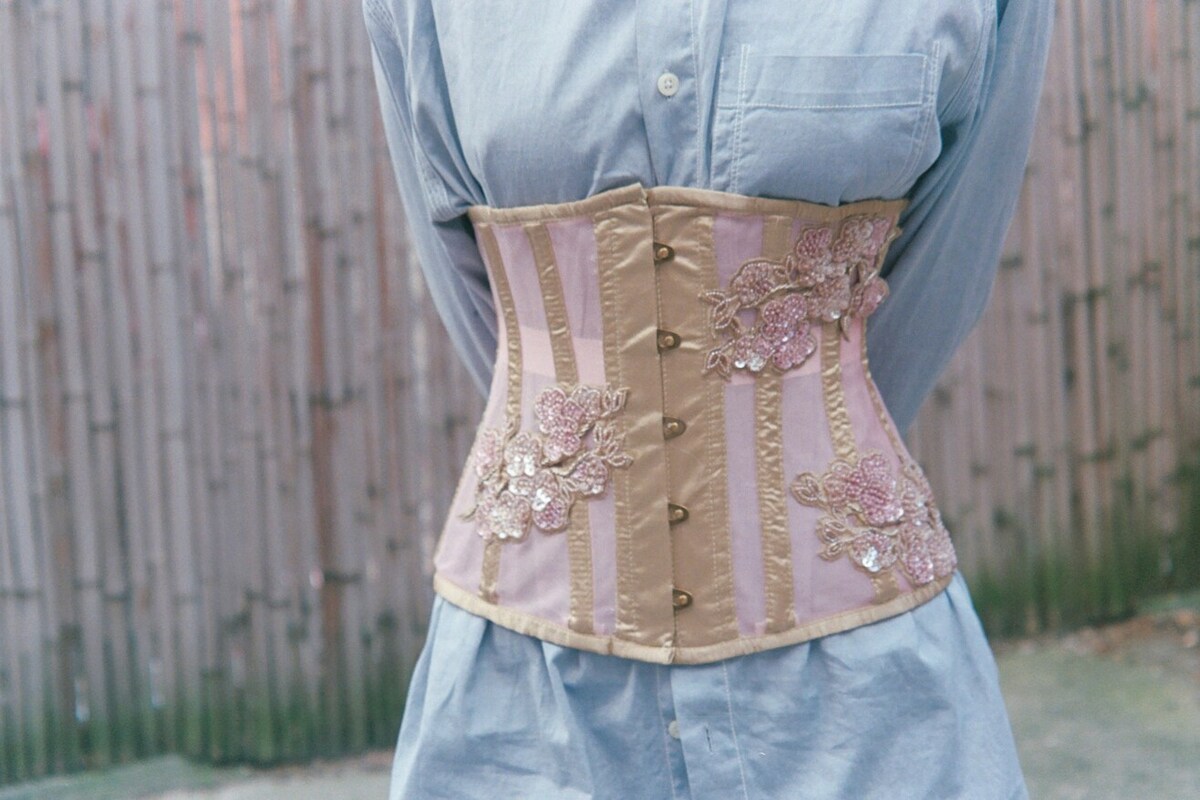
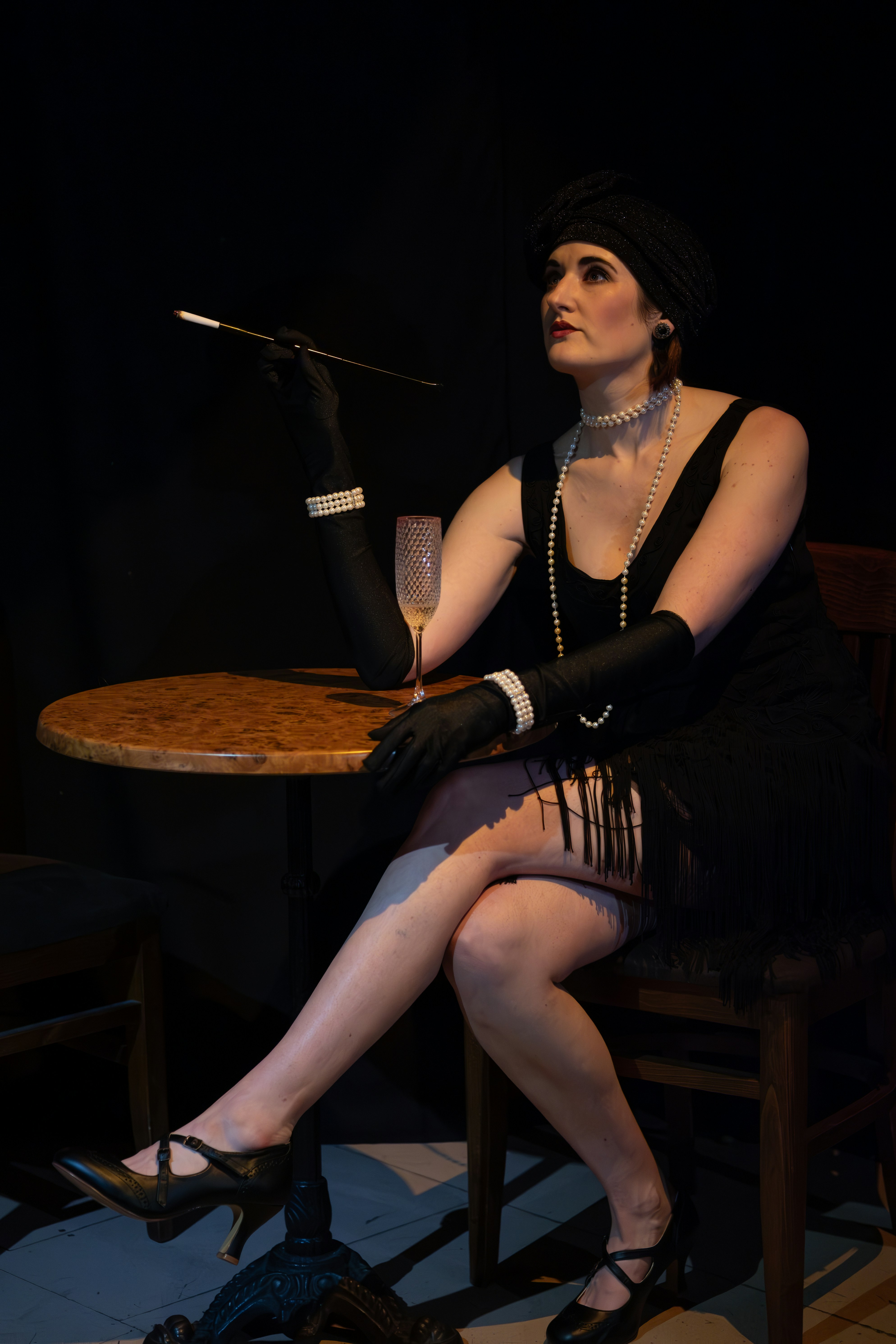


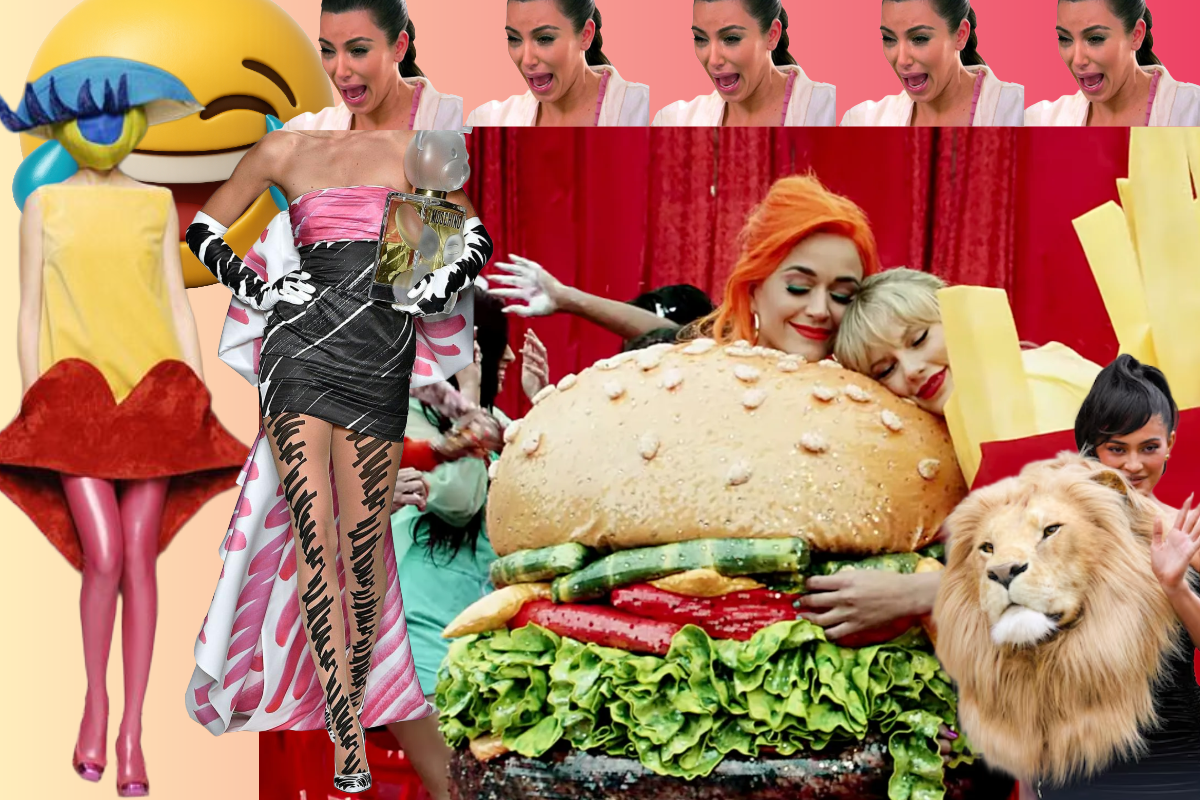

.png)